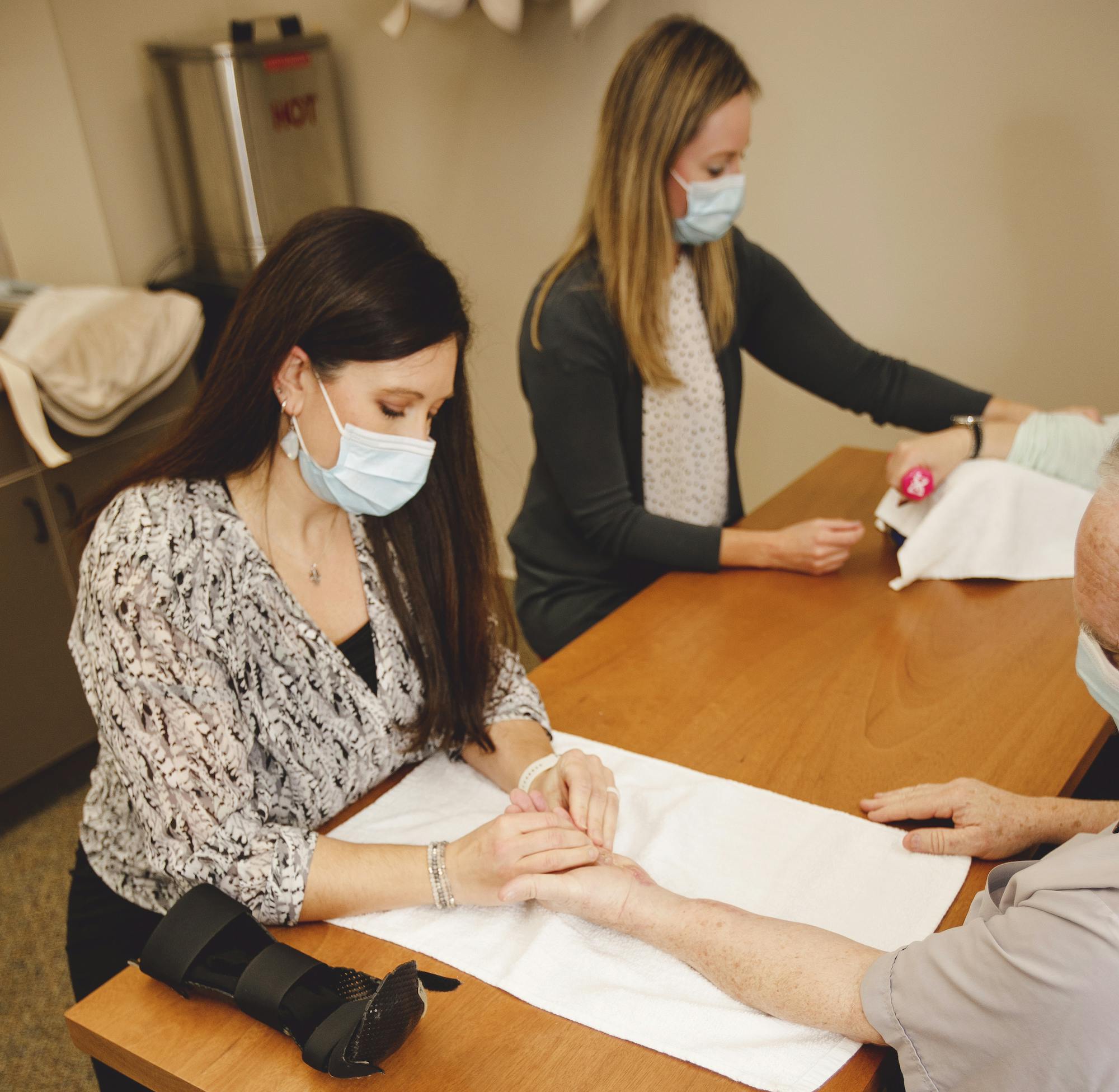- Blog
Occupational Therapy & Custom Orthoses
Posted on 11-25-2025 in Wrist, occupational therapy, Hand, Elbow & hand therapy by Dr. Steven Kronlage

Posted on 11-25-2025 in Wrist, occupational therapy, Hand, Elbow & hand therapy by Dr. Steven Kronlage
At its core, occupational therapy helps you regain independence in all areas of your life, including those that may affect your emotional, social or physical range of needs. Certified Hand Therapists (CHT) are board-certified in Occupational Therapy with an added qualification in Hand Therapy. As we step into April, we are fortunate to have the opportunity to recognize Occupational Therapy Month and our talented CHTs who provide these services to our patients.
When it comes to sustaining and optimizing the desired outcomes of your orthopaedic health, specialized hand therapy plays an instrumental role in expediting the healing process, increasing mobility, and extending the overall functionality of the upper extremities. They bridge the gap to provide non-operative interventions, preventative care and post-surgical rehabilitation for a wide variety of upper extremity disorders.
Under the guidance of our fellowship-trained Hand Center surgeons, our CHTs will evaluate your medical history, occupation, and day-to-day activity. They will also perform a series of evaluations that monitor the following areas: musculoskeletal, sensory, cognitive or perceptual. Additionally, they will assess surrounding vascular, skin or connective tissues. Further understanding of these factors will help your care team determine a comprehensive set of goals and a treatment plan that best serves you.
Depending on the condition or injury, treatment options may include custom orthosis fabrication for a fitted device molded to and worn on a specific body part. These devices can help to protect and support bones, tendons, ligaments, and nerves and keep these structures in safe and healthy positions. A custom orthosis can also be used to help fix differences or help improve limited functionality. They can also be used to immobilize (keep the body part and tissue still), mobilize (move the area) or restrict partial movement in an area.
Each individual orthosis has a specific purpose and falls into three primary categories: static, static progressive, dynamic (for increasing motion) and dynamic (for function). Custom orthoses are commonly prescribed for conditions and injuries such as:
Regardless of your needs, our team of fellowship-trained surgeons, Dr. Steven Kronlage, Dr. Alex Colemanand Dr. James Piorkowski, work closely with our CHTs to provide patients with the most appropriate treatment options. With same-day and next-day appointments available in Gulf Breeze and Pensacola and telehealth options, our goal is to make visits as accessible as possible. State-of-the-art, on-site imaging and diagnostics are also available at both locations for your convenience. Call 850.807.4200 or schedule an appointment online today.

Musculoskeletal ultrasound imaging offers orthopaedic patients safe, painless, and real-time imaging, without any harmful ionizing radiation or the need for uncomfortable positioning. As the first sports medicine physician in the region to utilize ultrasound for diagnostic and therapeutic purposes, Dr. Josh Hackel’s commitment to innovation has improved the accessibility of care for his patients.

According to the American Academy of Orthopaedic Surgeons, approximately 2 million older Americans sustain fractures yearly due to weak bones. By 2025, that number is predicted to rise to 3 million fractures annually. At North Florida Bone & Joint Specialists, we recognize the importance of maintaining strong bones, particularly as you age. In honor of Healthy Aging Month, the following tips can help you maintain, and even improve, your bone strength:

We see our share of broken bones as an orthopaedic and sports medicine practice. From the high school baseball player who collided with first base a little too hard to the avid DIY’er who took a tumble from an unsecured ladder and everything in between, we’ve seen it all. As we age, we also gradually lose bone mass, which occurs as small amounts of healthy bone are absorbed into your body as small amounts are replaced. When more bone is absorbed than is replaced, the density (bone mass) is reduced. Osteoporosis develops when the bone is no longer replaced as quickly as it is removed, and over time, it causes the bone to become progressively weaker, increasing the risk that it may break.